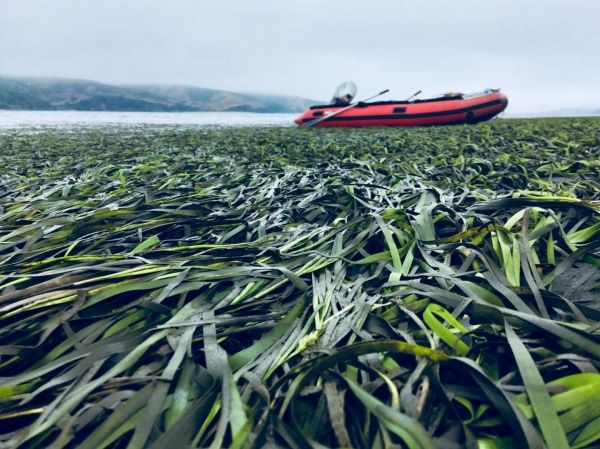Spanning six years and seven seagrass meadows along the California coast, a paper from the University of California, Davis, is the most extensive study yet of how seagrasses can buffer ocean acidification.
The study, published today in the journal Global Change Biology, found that these unsung ecosystems can alleviate low pH, or more acidic, conditions for extended periods of time, even at night in the absence of photosynthesis. It found the grasses can reduce local acidity by up to 30 percent.
“This buffering temporarily brings seagrass environments back to preindustrial pH conditions, like what the ocean might have experienced around the year 1750,” said co-author Tessa Hill, a UC Davis professor in the Department of Earth and Planetary Sciences and Bodega Marine Laboratory.
Read more at University of California - Davis
Image: Seagrass, akin to a marine forest in terms of the biodiversity found within it, spreads across Tomales Bay in northern California. (Credit: Melissa Ward, UC Davis)


